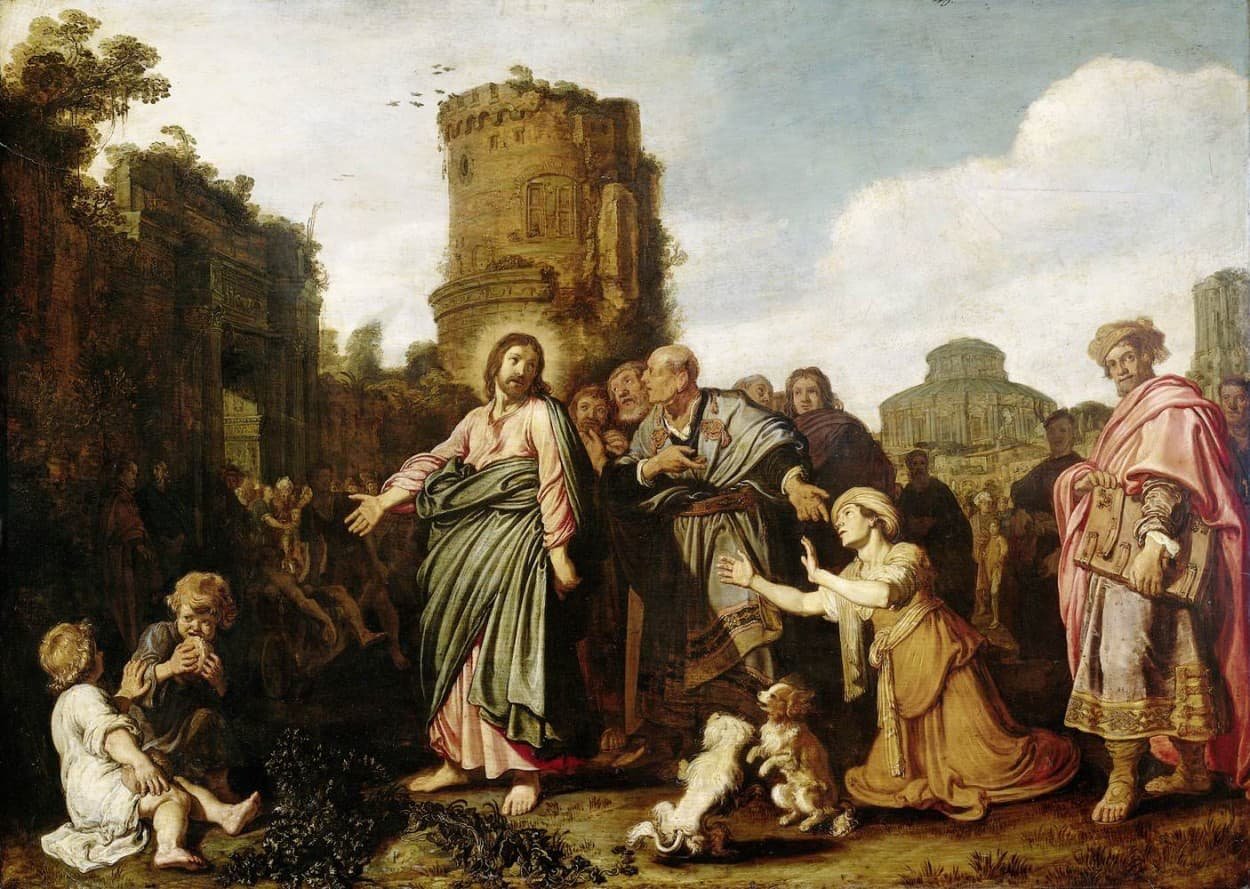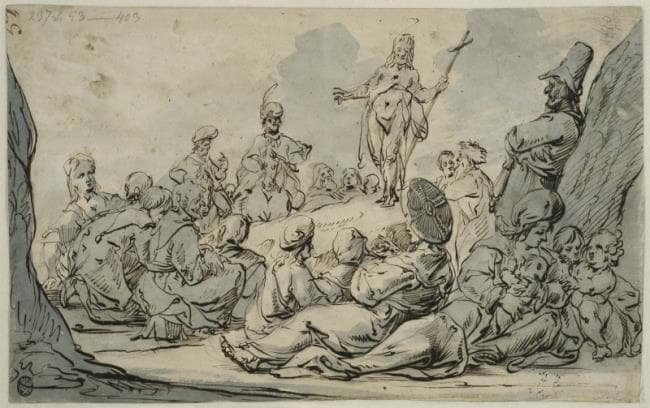Pieter Jansz.
AMSTERDAM, 1602 – 1672




Miracle of the Loaves
Pen and two shades of brown ink and grey wash
8.03 x 12.59 inches (204 x 320 mm).
Opinions vary on when artist and glass painter Pieter Jansz. was born but most scholars agree on 1602 as the year of his birth. His father, also called Pieter Jansz., was a cooper by trade and died the year his son was born. In 1633 Pieter married Oetje Jacobs, a child from his stepfather’s first marriage. Jansz. spent all his life in Amsterdam. On April 8, 1672 he was buried in the Nieuwe Kerk.
According to Arnold Houbraken, Pieter Jansz. was a pupil of Jan Philipsz van Bouckhorst (Haarlem, 1588 – 1632) and gave lessons to the art dealer Jan Pietersz. Zomer (Amsterdam, 1641 – 1724)[1]. A collection of twelve stained windows painted by him is preserved in the Nederlandse Hervormde Kerk te Oudshoorn (Dutch Reformed Church of Oudshoorn); they were designed by Daniël Stalpaert. The original drawings are preserved at the Rijksmuseum Amsterdam.[2] Houbraken characterized Jansz. as “a skilled draftsman on paper.”[3]
Drawings by Jansz.’s distinctive hand were previously ascribed to Karel van Mander III or Jan Philipsz. van Bouckhorst until scholar Marijn Schapelhouman recognized the connection between drawings housed in the Rijksmuseum and the stained-glass windows in Oudshorn. From this starting point, Schapelhouman compiled a body of drawings by the artist.
This characteristic study in pen and ink by Jansz. is stylistically close to those discussed by Schapelhouman in his article on the artist. It is particularly similar in handling to a drawing sold by Sotheby’s in March 2021 depicting Christ and the woman of Samaria (see fig.). The figures share the same handling of the pen, the same propensity for voluminous folded drapery, and focus on round-cheeked, expressive faces. Both drawings show the clear influence and inspiration that Jansz. drew from Pieter Lastman’s representations of Christ (see fig.). Jansz.’s drawings also show a propensity for areas of dark shading in the foreground and hatched shading, as seen in our drawing and a drawing housed at the Nationalmuseum Stockholm (see fig.)[4].
[1] Marijn Schapelhouman, 'Tekeningen van Pieter Jansz., 'Konstig Glasschrijver',’ Bulletin van het Rijksmuseum, vol. 33, no. 2 (1985), pp. 71-92
[2] Pieter Jansz., Ontwerp voor glasraam 10 geschonken door het hoogheemraadschap Rijnland. Pen and brown ink, grey wash, watercolour, pencil, 608 x 250 mm. Rijksmuseum Amsterdam, inv. no. RP-T-1894-A-2839.
[3] Arnold Houbraken. De groote schouburgh der Nederlantsche konstschilders en schilderessen. (3 delen). 1718-1721.
[4] Nationalmuseum Stockholm, Stockholm , inv./cat.nr NMH 284/1973 recto